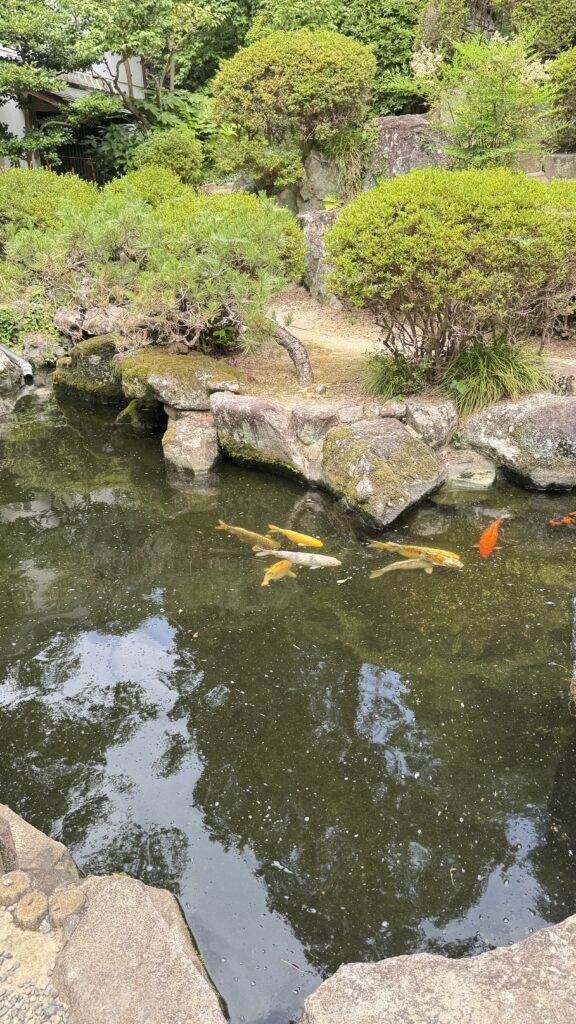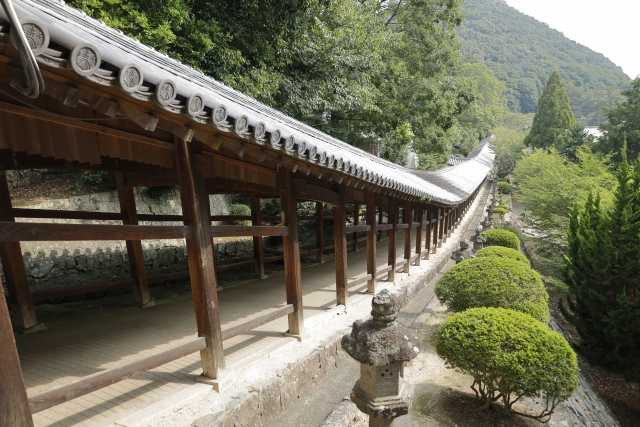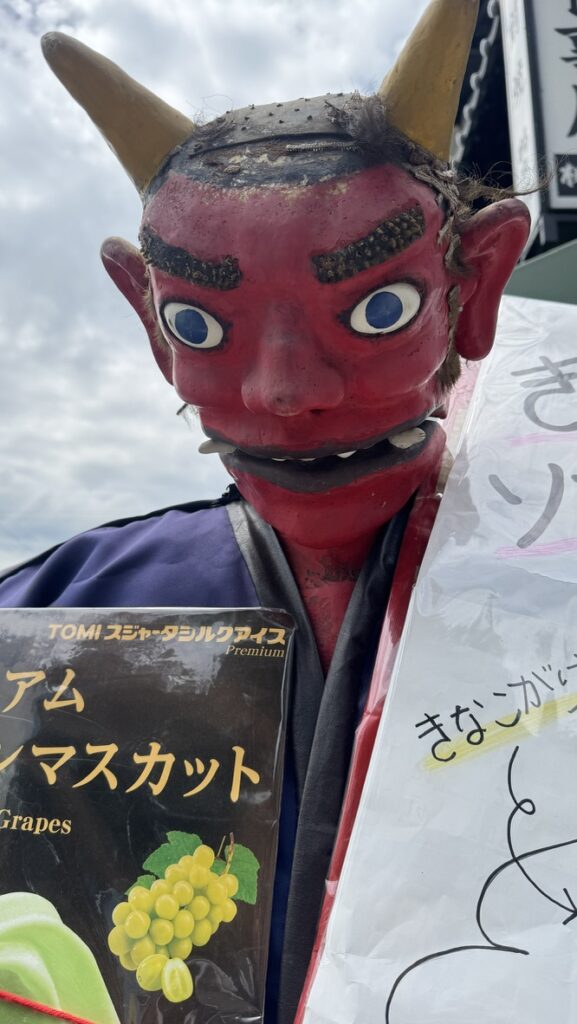Located in the quiet foothills of northern Okayama City, Kibitsu Shrine is a place where time seems to slow down. Step through its torii gate and you’ll immediately feel a shift in atmosphere—calm, serene, and just a bit mystical.
This isn’t just any shrine. Kibitsu Shrine is deeply tied to Japan’s mythology, especially the story behind one of the country’s most iconic heroes: Momotaro, the Peach Boy. Today, let’s take a relaxed dive into the myths, architecture, and curious history of this special site.

The Legend of Kibitsuhiko and the Oni, Ura
Kibitsu Shrine enshrines Kibitsuhiko-no-Mikoto, a legendary prince from ancient Japan.
According to myth, he was dispatched by the imperial court to the region of Kibi to subdue a fearsome ogre-like figure named Ura, who had been terrorizing the land.
Sound familiar? That’s because this tale later evolved into the famous Japanese folktale Momotaro—with Kibitsuhiko as the hero, Ura as the ogre, and the Kibi region as the original “Ogre Island.”
You can still visit the ruins of Kinojo (Ogre’s Castle) today, believed to be Ura’s stronghold. It’s a scenic hiking spot and a great way to physically connect with the myth.
One-of-a-Kind Shrine Architecture
Kibitsu Shrine isn’t just about legends—it’s also architecturally unique.
Its main hall features a style called Hiyoku-Irimoya-zukuri (literally, “paired gabled-roof style”), which is found nowhere else in Japan. This distinctive structure has been designated a National Treasure.
Another highlight is the long wooden corridor that gently slopes for nearly 400 meters. Surrounded by natural light and the scent of cedar, walking this passageway is a meditative experience in itself.

Fortune Telling by Sound: The Naru-Kama Ritual
One of Kibitsu Shrine’s most fascinating traditions is the Naru-Kama Shinji, or “boiling cauldron ritual.”
Inside the Kama-den (cauldron hall), a sacred fire is lit beneath a pot, and the sound it makes is interpreted as a form of fortune-telling.
This ancient ritual is still performed today, and visitors can reserve a chance to experience it.
Listening to the boiling sound in a quiet hall—it feels almost like the voice of the gods whispering in your ear.
So Wait—There’s Another Kibitsuhiko Shrine?
Here’s an interesting twist: there’s another shrine in Okayama that also enshrines Kibitsuhiko-no-Mikoto. It’s called Kibitsuhiko Shrine, and it’s located about 15 minutes by car from Kibitsu Shrine.
Why two shrines for the same deity?
The answer lies in historical shifts. When Kibitsu Shrine lost influence during certain periods, Kibitsuhiko Shrine rose as a local center of worship.
Rather than viewing them as rivals, it’s more accurate to say they served different roles: Kibitsu Shrine as the guardian of the entire Kibi region, and Kibitsuhiko Shrine as a more localized community-focused place of faith.
How to Get There
Kibitsu Shrine
Location: 931 Kibitsu, Kita-ku, Okayama City, Okayama Prefecture
Access: 10-minute walk from Kibitsu Station on the JR Kibi Line
Parking: Available
Nearby you’ll also find sites like Kibitsuhiko Shrine, Kinojo Castle Ruins, and ancient burial mounds, making the area perfect for a short day trip into myth and history.

Final Thoughts
Kibitsu Shrine isn’t just a pretty shrine with a long history.
It’s a place where Japan’s ancient myths and real history come together in a very tangible way.
Whether you’re into legends, architecture, traditional rituals, or just want a peaceful escape with a deeper story behind it, Kibitsu Shrine is worth the visit.
Take your time, walk the corridor, listen to the wind, and let the echoes of the past speak to you.
Custom Tours Available
If you’re interested, we can create a custom-made tour that includes Kibitsu Shrine along with other nearby spots of your choice.
Feel free to contact us to plan a tour tailored to your interests.

